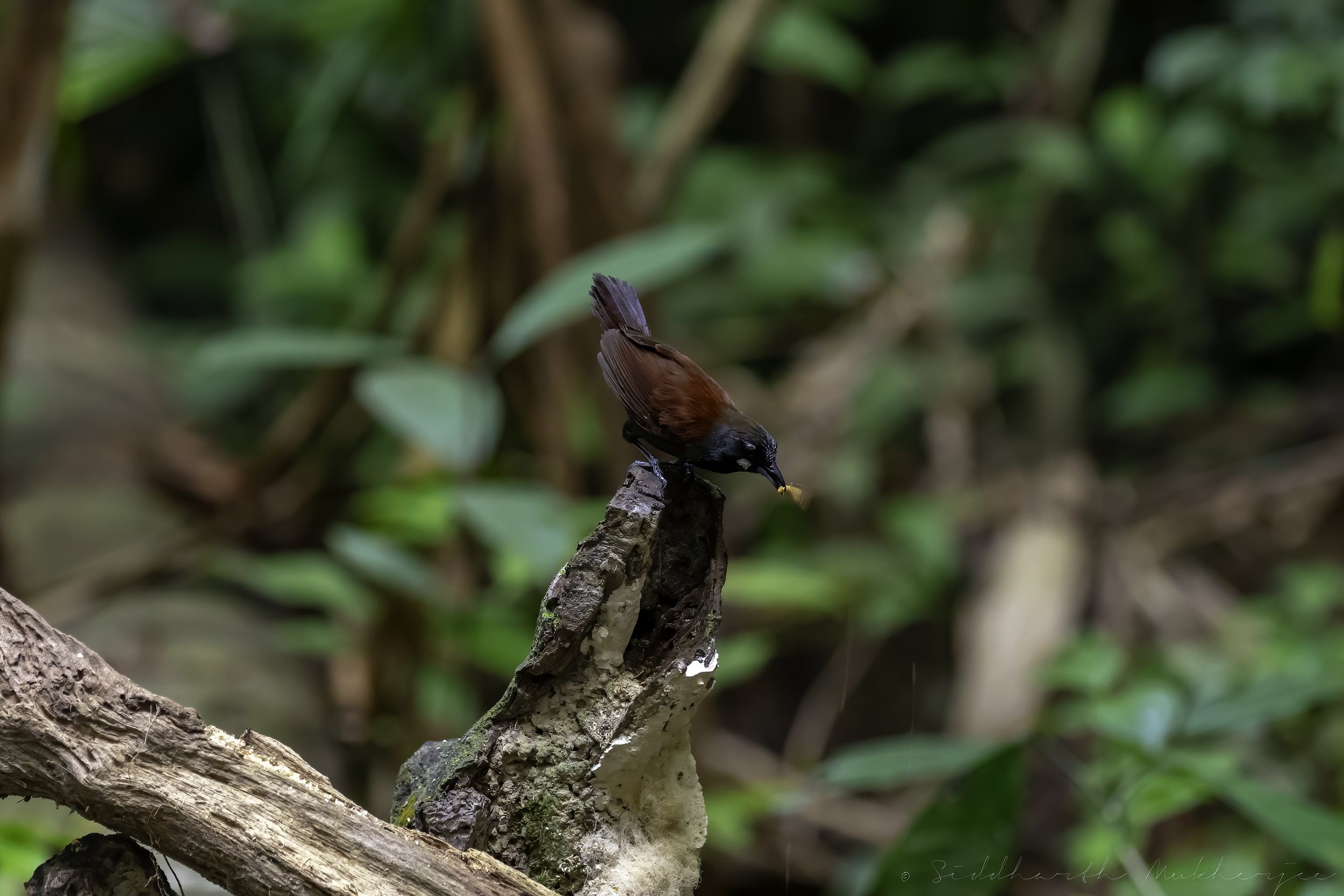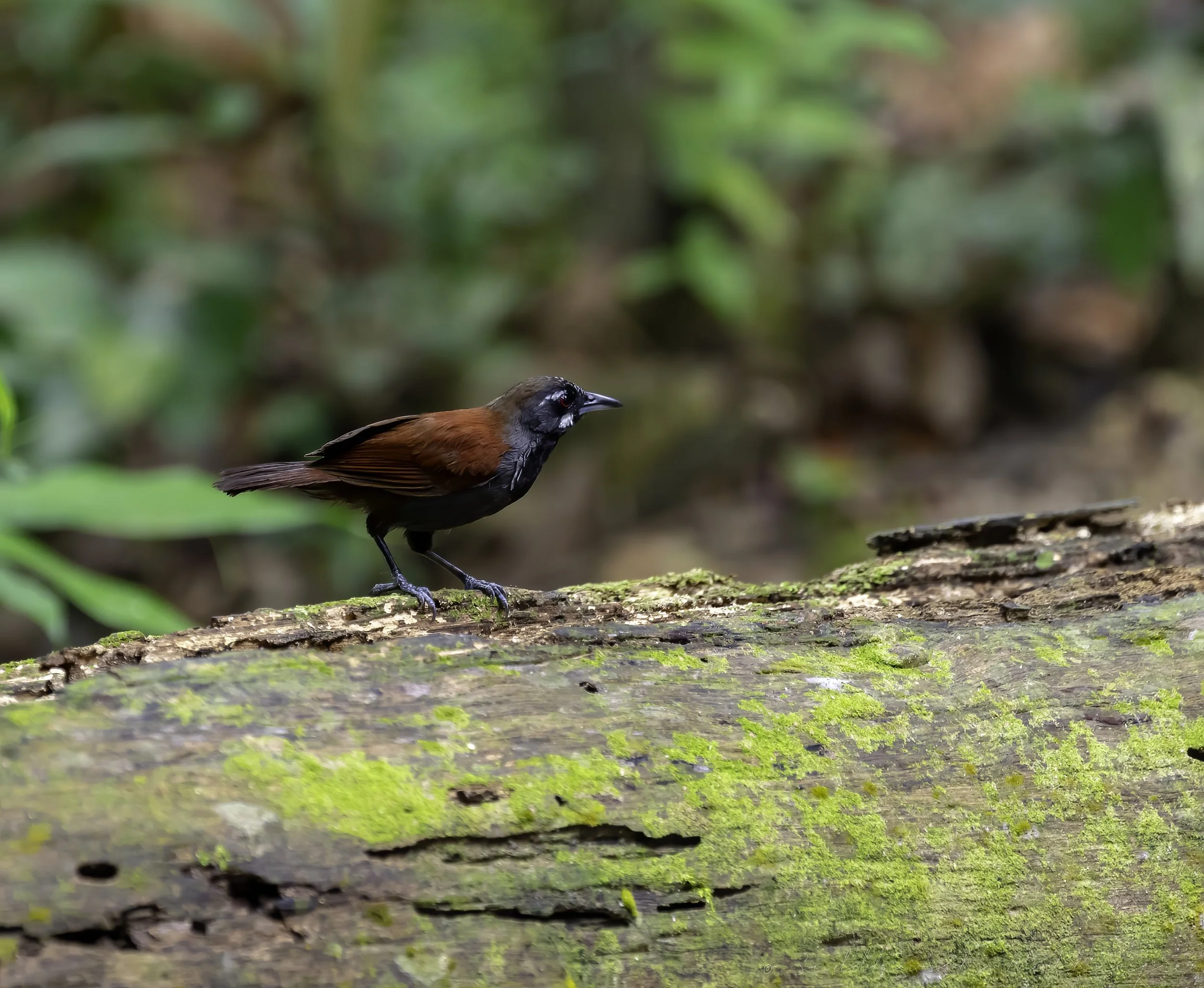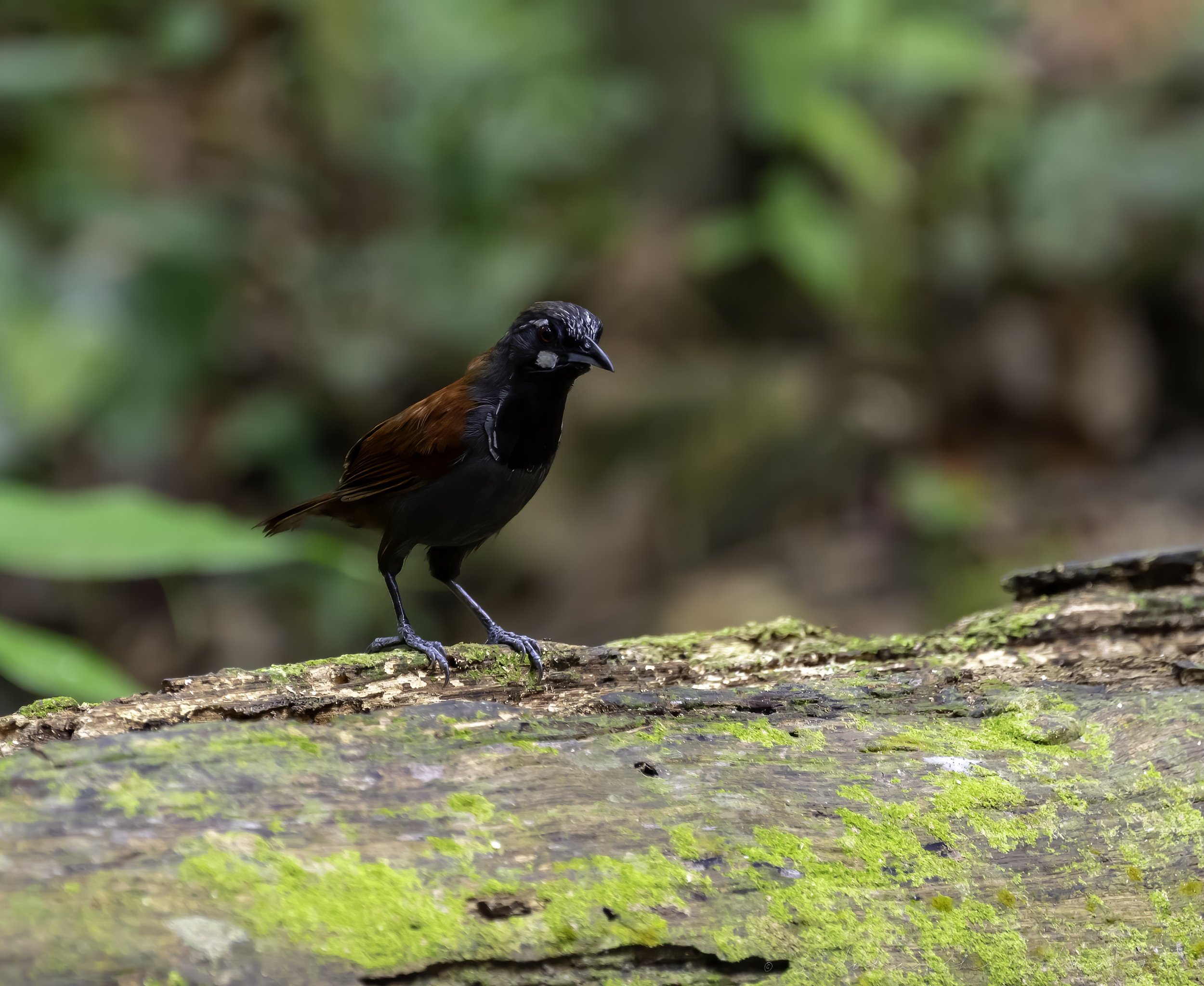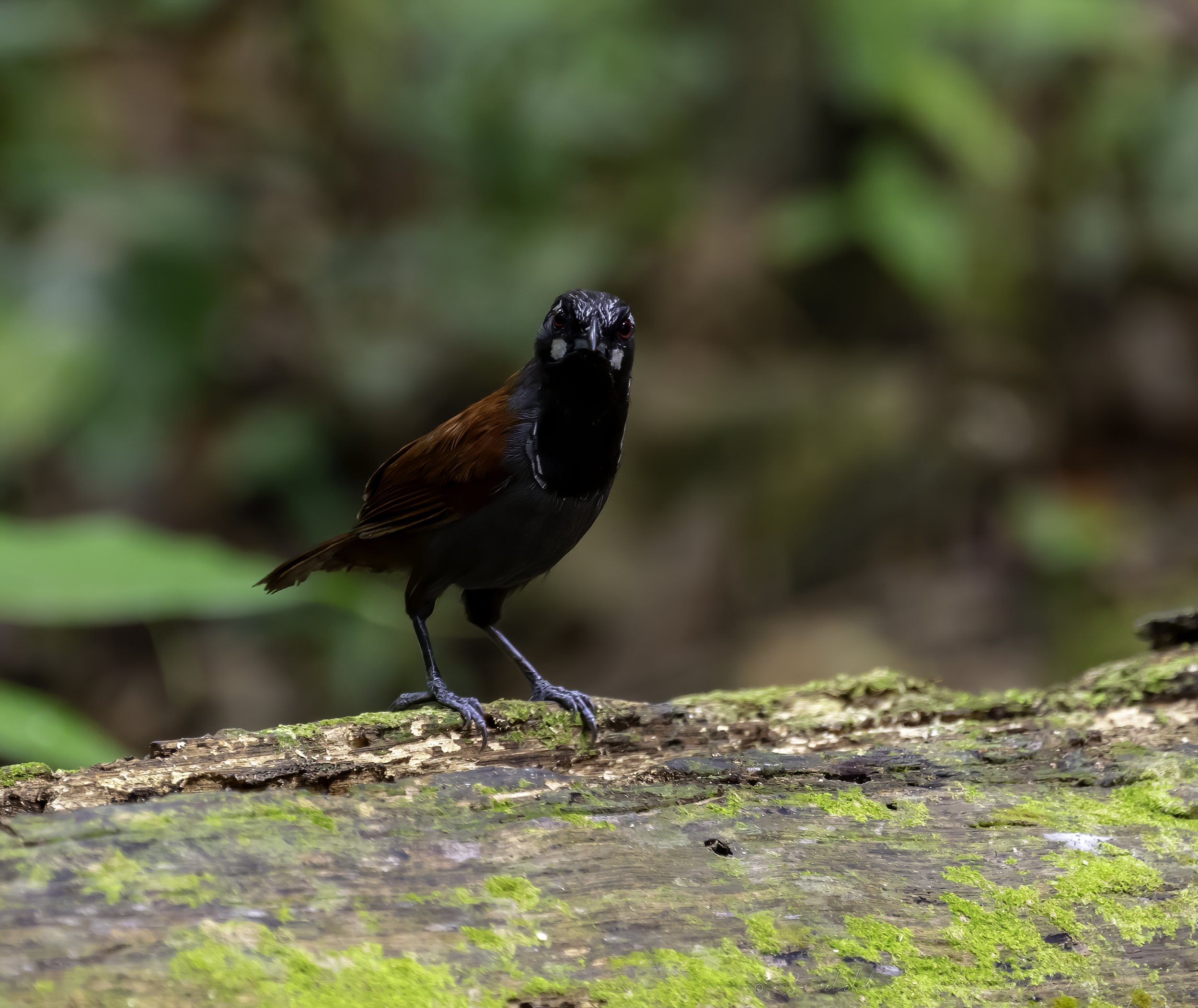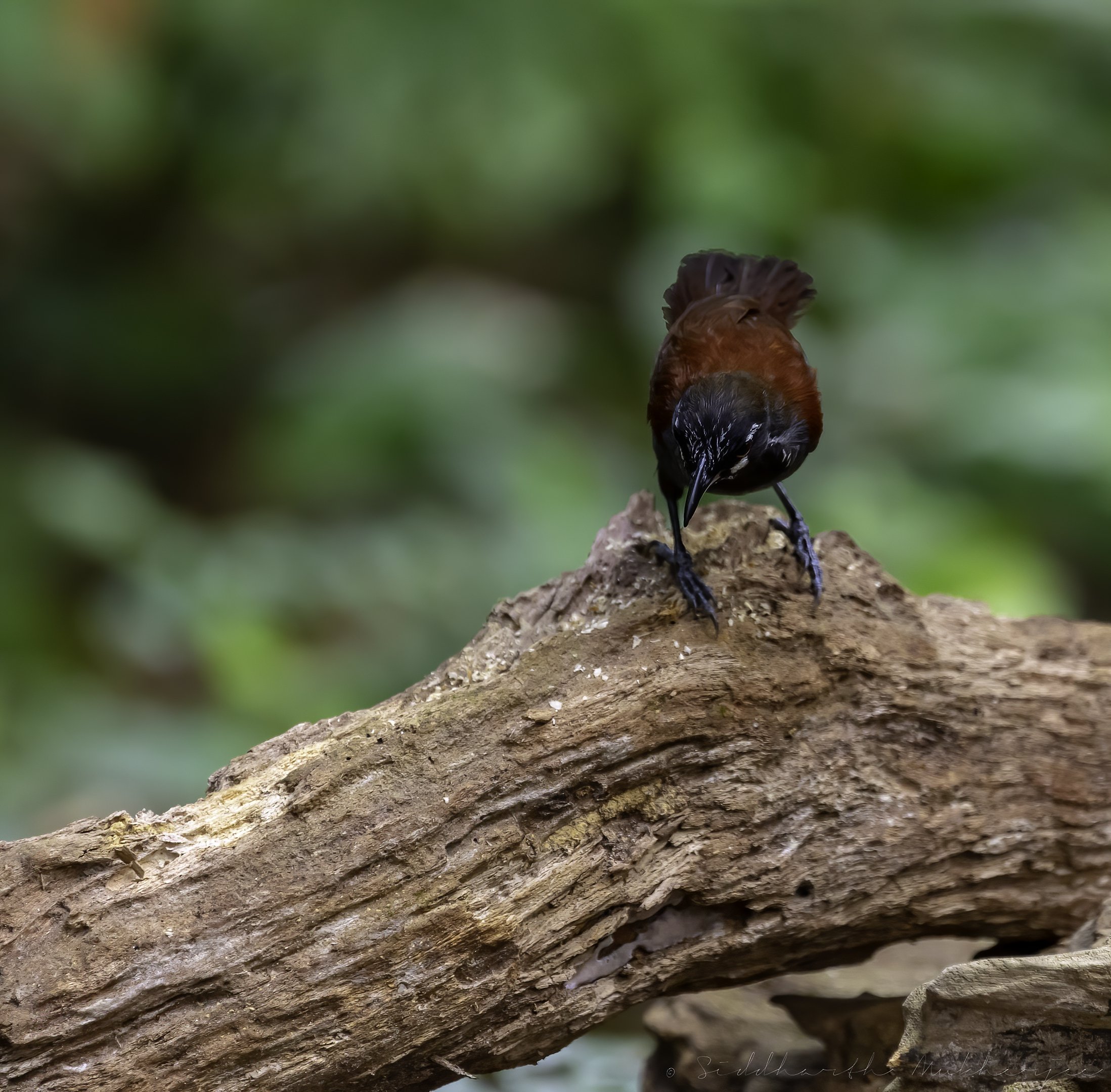Black-throated Babbler
Stachyris nigricollis
NEAR THREATENED
Sungai Congkak, Malaysia
Continuing on the babblers today is focussed on the Near Threatened Black-throated Babbler which I was fortunate to have observed and photographed in the forests of Sungai Congkak. I have already written about the various babblers, warblers, parrotbills, white-eyes, fulvettas, laughingthrushes and their allies from across Asia Pacific in numerous earlier blogs and a collection of my other babblers: Old World Babblers.
The Old World Babblers are a family of mostly Old World passerine birds rather diverse in size and coloration, characterised by soft fluffy plumage. These are birds of tropical areas, with the greatest variety in Southeast Asia and the Indian subcontinent. The timaliids are one of two unrelated groups of birds known as babblers, the other being the Australasian babblers of the family Pomatostomidae (also known as pseudo-babblers). Morphological diversity is rather high; most species resemble warblers, jays or thrushes.
“This group is among those Old World bird families with the highest number of species still being discovered. ”
In an earlier blog I have included the genus of passerines known as Pnoepyga endemic to southern and south eastern Asia. The Pnoepyga contains five species with its members known as cupwings or wren-babblers and they have long been placed in the babbler family Timaliidae. But a 2009 study of the DNA of the families Timaliidae and the Old World warblers (Sylviidae) found no support for the placement of the genus in either family, prompting the authors to erect a new monogeneric family, the Pnoepygidae.
These are all part of the superfamily Sylvioidea, one of at least three major clades within the Passerida along with the Muscicapoidea and Passeroidea. It contains about 1300 species including the Old World warblers, Old World babblers, swallows, larks and bulbuls. Members of the clade are found worldwide, with fewer species present in the Americas. Some of the families within the Sylvioidea have been greatly redefined. In particular, the Old World warbler family Sylviidae and Old World babbler family Timaliidae were used as waste-bin taxa and included many species which have turned out not to be closely related. Several new families have been created and some species have been moved from one family to another - to the extent that when I took some of these photos I had different names for them to what they are currently named in this article.
The Babbler group:
Paradoxornithidae: parrotbills (37 species)
Zosteropidae: white-eyes (141 species)
Timaliidae: babblers, scimitar babblers (54 species)
Pellorneidae: fulvettas, ground babblers (60 species)
Alcippeidae: Alcippe fulvettas (10 species)
Leiothrichidae: laughingthrushes and allies (133 species)
This list is an extract from the list of 25 families is based on the molecular phylogenetic study published by Silke Fregin and colleagues in 2012 and the revisions of the babbler group by Cai et al (2019) The family sequence and number of species is from the online list of world birds maintained by Frank Gill and David Donsker on behalf of the International Ornithological Committee (IOC).
Illustrated in this blog is one of the Timaliidae I was fortunate to observe and photograph in the forests near Sungai Congkak in Malaysia. As always I have some room around the bird to let it breathe and also to provide a glimpse into its typical perches and habitats.
Timaliidae
Timaliids are small to medium birds. They have strong legs, & many are quite terrestrial. They typically have generalised bills, similar to those of a thrush or warbler, except for the scimitar babblers which, as their name implies, have strongly decurved bills. Most have predominantly brown plumage, with minimal difference between the sexes, but many more brightly coloured species also exist.
This group is not strongly migratory, and most species have short rounded wings, and a weak flight. They live in lightly wooded or scrubland environments, ranging from swamp to near-desert. They are primarily insectivorous, although many will also take berries, and the larger species will even eat small lizards and other vertebrates.
Typical babblers live in communities of around a dozen birds, jointly defending a territory. Many even breed communally, with a dominant pair building a nest, and the remainder helping to defend and rear their young. Young males remain with the group, while females move away to find a new group, and thus avoid inbreeding. They make nests from twigs, and hide them in dense vegetation.
The Timaliids are a family of 56 species divided into the following ten genera: Erythrogenys, Pomatorhinus, Spelaeornis, Stachyris, Cyanoderma, Dumetia, Mixornis, Macronus, Timalia, Melanocichla.
The focus today is on the near threatened Black-throated Babbler which comes in the Timaliidae family. But first a little bit about the forests of Sungai Congkak.
Sungai Congkak
About 35 kilometres from both Kuala Lumpur city center and Selangor’s Kajang town, lies the Sungai Congkak Recreational Forest, or Hutan Lipur Sungai Congkak. Also known as Chongkak Park & Resort, it is s a popular recreational forest in the Hulu Langat district of Selangor state and is managed by Tourism Selangor.
A dipterocarp rainforest that is part of the great Titiwangsa mountain range, Sungai Congkak Recreational Forest is rich in flora and fauna with meandering, crystal-clear rivers. Nestled in a cool and hilly area of Hulu Langat, the route leading to the forest passes through quaint towns and villages where the pace of life is noticeably slower.
Slightly deeper into Sungai Congkak Recreational Forest is the starting point of a challenging hiking trail to Bukit Chenuang (Chenuang Hill) which takes about an hour. Reaching an altitude of about 850 meters, the peak here provides great views of the surrounding valley. From Bukit Chenuang, one can continue hiking the trail to Bukit Batu Kumbang, which is about an hour away. The views of the Titiwangsa mountain range from the peak of Bukit Batu Kumbang make it a worthwhile hike.
Black-throated Babbler
The Black-throated Babbler (Stachyris nigricollis) is a species of babbler in the genus Stachyris in the family Timaliidae. It is found in Brunei, Indonesia, Malaysia, Singapore & Thailand. Its natural habitats are subtropical or tropical moist lowland forest and subtropical or tropical swampland. It is threatened by habitat loss.
Like many other babblers, this is a handsome bird but difficult to see well, as it forages in dense vegetation. It is bright rufous above and gray below, with a black throat and a bright white brow and circular spot at the base of the bill. It inhabits primary and secondary growth, including wet, swampy areas and weedy plantations from lowlands up into the foothills. The song is a series of rapid fire, resonant-sounding hoots. Calls include an array of loud, insistent chattering and rattling notes.
This widespread species is listed as Near Threatened because it is suspected to be in moderately rapid decline as a result of habitat destruction and degradation across its range. It is apparently a successful colonist of some secondary habitats, suggesting that the population decline is not more rapid.
Status: Near Threatened
Now for the photos of this handsome babbler of dense vegetation.
‡‡‡‡‡
This is but a glimpse into the beautiful world of the babblers and the tremendous variety in the species and that they are still being discovered. Do subscribe if you liked what you saw and if you would like to continue to read these insights into the beautiful birds and animals inhabiting our planet.
Related Posts



